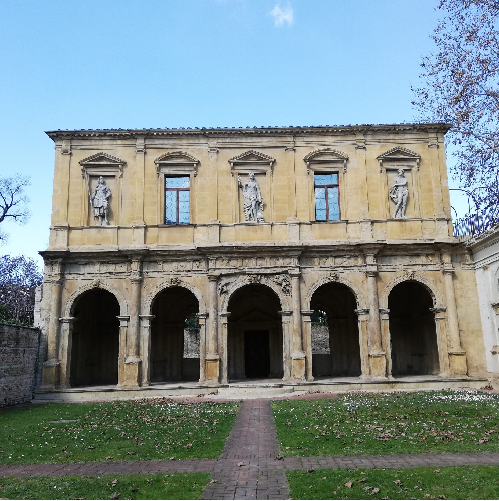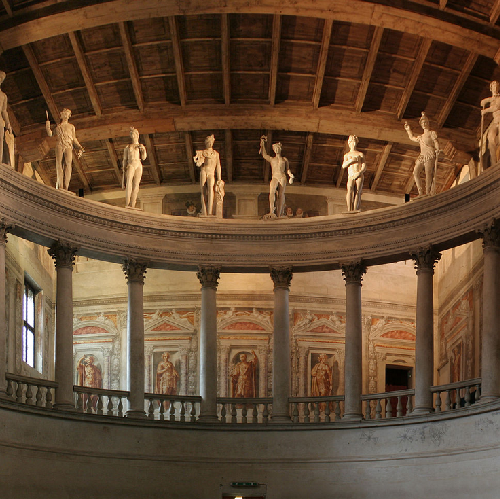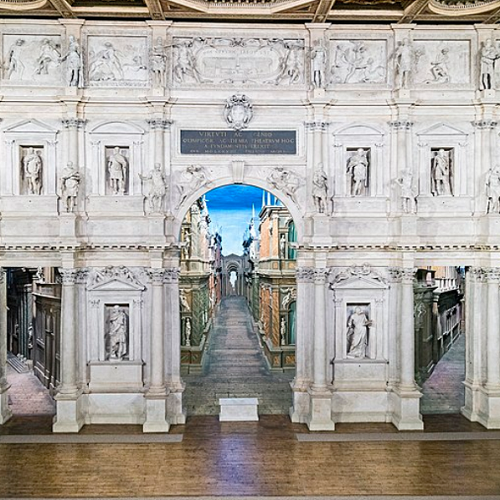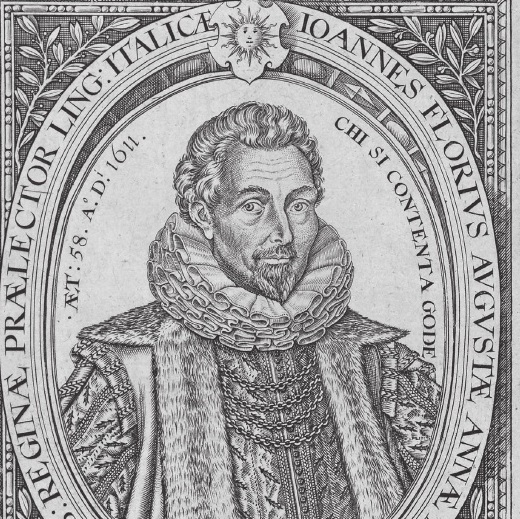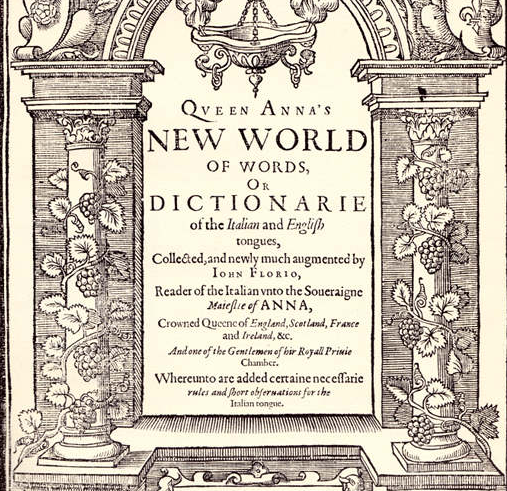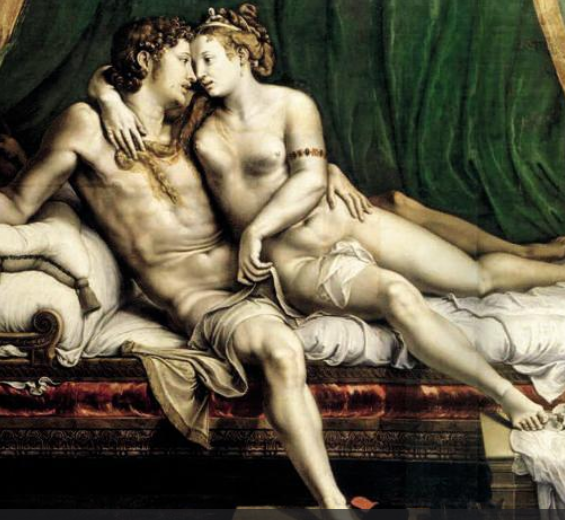Michel Eyquem, Sieur de Montaigne
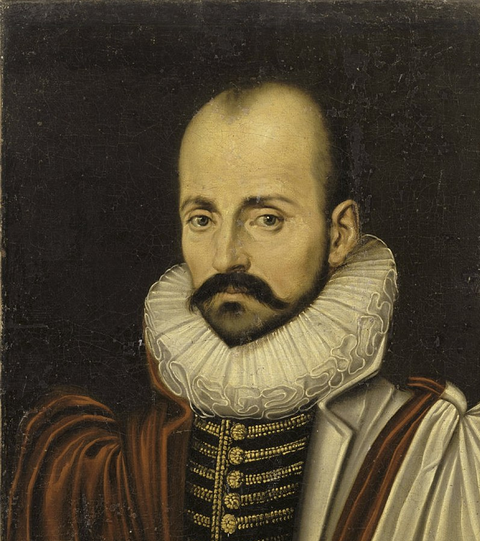
Shakespeare, Florio e La tempesta
Florio è stato il primo traduttore dei Saggi di Montaigne in inglese. Numerosi studiosi hanno evidenziato
la grande influenza della traduzione di John Florio dei Saggi di Montaigne nelle opere di Shakespeare.
Friedrich Nietzsche scrisse che "Shakespeare fu il miglior lettore di Montaigne".1
È risaputo che il discorso di Gonzalo nella Tempesta2 corrisponde alla traduzione di Florio di Montaigne,
precisamente al saggio “Des Cannibales”:
“It is a nation, would I answer Plato, that hath no kinde of traffike, no knowledge of Letters, no
intelligence of numbers, no name of magistrate, nor of politike superioritie; no use of service, or
riches or of povertie; no contracts, no successions, no partitions, no occupation but idle; no respect
of kindred, no use of wine, corne, or mettle. The very words that import lying, falsehood, treason,
dissimulations, covetousness, envie, detraction, and pardon, were never heard of amongst them.
How dissonant would hee finde his imaginarie common-wealth from this perfection?”3
GONZALO
I’th’commonwealth I would by contraries
Execute all things. For no kind of traffic
Would I admit, no name of magistrate.
Letters should not be known. Riches, poverty,
And use of service, none. Contract, succession,
Bourn, bound of land, tilth, vineyard, none.
No use of metal, corn, or wine, or oil.
No occupation: all men idle, all,
[...]
........Treason, felony,
Sword, pike, knife, gun, or need of any engine
Would I not have;”4
Ci sono anche altri momenti, in particolare in King Lear, che chiariscono che Shakespeare aveva
letto i Saggi. In King Lear è Edmund – quello cattivo – che prende in prestito dal pensiero di
Montaigne sulla paternità; mentre in Amleto Polonio - alcuni dei cui consigli fanno eco a
Montaigne - e' un chiacchierone.5 Sia Shakespeare che Florio impiegano "un simile stile enfatico e
scarno per delineare le caratteristiche e i meriti di una sorta di società utopica, ricca di abbondanza
naturale e senza bisogno di costrutti artificiali, fino alla corrispondenza parola per parola tra i due testi".6
George Coffin Taylor
Nel 1925, George Coffin Taylor pubblicò il libro Shakspere's Debt to Montaigne7 presentando parallelismi
tra Shakespeare e il Montaigne di Florio. Rileva sovrapposizioni nel "vocabolario, frasi, brevi e lunghe".
passaggi, e, dopo lo stile . . . anche nel pensiero'.8
Taylor divide i passaggi chiave in tre gruppi:
"First, that . . . group of passages in the Florio Montaigne and in the plays of Shakspere written
during 1603 and after, so similar in phraseology as practically to preclude all possibility of doubt.
Second, another group of passages and phrases in the Florio Montaigne and in Shakespeare’s plays
written during and after 1603, which, though not so strikingly similar in phraseology as to preclude
all doubt, are yet similar enough to make one feel that the Shakspere passage could not have taken on
its final form unless Shakspere had made the acquaintance of the Montaigne passage. Third, a list of
approximately seven hundred and fifty words and phrases from the Florio Montaigne used also by Shakespere,
but never in any composition of his antedating 1603 – many of them, if one may judge from the Oxford Dictionary,
never used by anyone before 1603."9
Per Coffin Taylor:
"When the number of expressions in Shakspere, and the number of the thoughts in Shakspere, which could never
have taken on their final form but for a previous reading of Montaigne, [translated by John Florio] are borne
in mind, it may well be asked whether any other single work that Shakspere read influenced him in so many
differerent plays and in so great a variety of ways – words, phrases, passages, thoughts."10
In una prima recensione del libro di Taylor, T. S. Eliot fu particolarmente colpito dal terzo elenco di Taylor,
costituito da "parole e frasi abbastanza numerose da far presumere che Shakespeare le abbia prese da Florio".11
Eliot ha anche elogiato Taylor per essersi concentrato sulle parole parallele piuttosto che sui pensieri.
La conoscenza di Shakespeare con Montaigne prima della pubblicazione di Florio
Lo studioso di Shakespeare Jonathan Bate ha affermato che "è stato questo libro [di Montaigne], forse sopra
tutti gli altri, a plasmare la mente di Shakespeare nella seconda metà della sua carriera".12
Nel suo articolo Montaigne e Shakespeare: due grandi scrittori di una sola mente.13
Bate ha anche affermato che la traduzione di Florio dei Saggi di Montaigne ha avuto un impatto sulle opere
di Shakespeare anche prima della pubblicazione:
"His reading of Montaigne in Florio’s translation some time before the writing of Lear gave him a
philosophically articulated basis for his own long-standing practice."14
Jonathan Bate non spiega come Shakespeare conoscesse l'opera tradotta prima della pubblicazione:
"Scholars debate whether or not Shakespeare saw Florio’s translation in manuscript before it was
published in 1603. The balance of evidence suggests that he probably did not, but rather that his
mind and Montaigne’s worked in such similar ways that the character of Hamlet, created before 1600,
seems like a reader of Montaigne even though he could not have been."15
Nel suo recente libro How the Classics made Shakespeare, Jonathan Bate afferma che è possibile che
Shakespeare conoscesse la traduzione di Florio dei Saggi di Montaigne prima della sua pubblicazione
grazie ad alcuni manoscritti.16
William M. Hamlin17 ha sottolineato che la traduzione di Florio dei Saggi di Montaigne ha avuto un
impatto sulle opere di Shakespeare, prima che la traduzione pubblicata apparisse e affermano che
Shakespeare conosceva la traduzione prima della pubblicazione, ma non fornisce alcuna spiegazione
o prova di come fosse possibile che Shakespeare conoscesse il lavoro tradotto prima della pubblicazione.
Per Hamlin, Florio cattura il suo stile curioso e tortuoso con sorprendente esuberanza verbale.
Montaigne di Florio: L'opera di un drammaturgo
Stephen Greenblatt osserva, nella sua introduzione alla sua edizione della traduzione di Montaigne
di Florio, che c'è spesso un tocco shakespeariano nello stile della prosa di Florio.18
Francis Otto Matthiessen, nel 1931, pubblicò Translation: an Elizabethan art,19 compiendo un'ampia
analisi del metodo traduttivo di Florio, evidenziando le somiglianze tra lo stile anglo-italiano e
quello shakespeariano. Per Matthiessen, Florio altera Montaigne per il bene di un quadro più completo,
il desiderio di una sensazione di movimento è la forza alla base di quasi tutte le aggiunte di Florio,
e vuole sempre aumentare l'enfasi, aumentare e ingrandire. Praticamente in ogni caso queste alterazioni
di Florio sono dettate da un senso teatrale.20
L'abitudine di Florio di vedere e dire le cose in modo drammatico è una delle sue qualità più distintive:
"The dramatist' method, therefore, consists in taking a situation and heightening its pitch by a
skillful exaggeration of tone and by a hint of action in the swing and cadence of his words.
Such also is Florio's method, and it permeates his treatment of Montaigne."21
Matthienssen sottolinea inoltre che:
"Florio's sense of the dramatic is the central force molding his prose. It determines not only the
manner in which he builds upon Montaigne's situations, but also his addition of words, not for their
meaning, but for their rhythm. When Florio heightens the content, sometimes it is the splendor, sometimes
the pathos, more often the sheer excitement of the situation that catches him."
Per Matthiessen, a volte Florio non traduce più, ma immagina di nuovo la scena. In ogni situazione sono
gli elementi di contrasto a focalizzare la sua attenzione, ed egli li sviluppa «con l'istinto del drammaturgo,
facendo di tutto per aumentare l'effetto».22
Con la sua analisi, Matthiessen ha sottolineato le somiglianze stilistiche tra l'anglo-italiano e Shakespeare,
e ha affermato che "sarebbe pericoloso insistere troppo sulle sorprendenti somiglianze nel discorso e nel
pensiero",23 e ha concluso la sua analisi affermando che Florio e Shakespeare "parlavano costantemente
con le stesse persone, ascoltavano le stesse teorie, respiravano la stessa aria".24
[1]Frampton Nicholas, date=10 June 2014, title=Shakespeare's Montaigne review, work=The Guardian,
url=https://www.theguardian.com/books/2014/jun/10/shakespeares-montaigne-john-florio-review
[2]II, I, Lines 150-167
[3]Florio, John. the Essays of Montaigne Done into English, 1603, page 258
[4]Shakespeare William, editor1=Garye Taylor, editor2=John Jowett, editor3=Terri Bourus, editor4=Gabriel Egan, title=The Tempest,
date=1623-01-01; url=http://dx.doi.org/10.1093/oseo/instance.00148673, work=The New Oxford Shakespeare: Modern Critical Edition,
pages=3069, publisher=Oxford University Press, doi=10.1093/oseo/instance.00148673, isbn=978-0-19-959115-2, access-date=2021-04-21
[5]title=Montaigne and Shakespeare: two great writers of one mind, url=https://www.newstatesman.com/culture/2014/07/montaigne-and-shakespeare-two-great-writers-one-mind,
access-date=2021-04-21, website=www.newstatesman.com, language=en
[6]title=Montaigne and "The Tempest", url=https://www.shakespeare.org.uk/explore-shakespeare/blogs/montaigne-and-tempest/,
access-date=2021-04-21, website=Shakespeare Birthplace Trust
[7]Taylor George Coffin, date=1925-12-31, title=Shakspere's Debt to Montaigne, url=http://dx.doi.org/10.4159/harvard.9780674434219,
doi=10.4159/harvard.9780674434219, hdl=2027/mdp.39015010297995, isbn=9780674431959
[8]Taylor George Coffin, date=1925-12-31, title=Shakspere's Debt to Montaigne, url=http://dx.doi.org/10.4159/harvard.9780674434219,
doi=10.4159/harvard.9780674434219, hdl=2027/mdp.39015010297995, isbn=9780674431959
[9]url=http://dx.doi.org/10.4159/harvard.9780674434219.c1, year=1925, place=Cambridge, MA and London, England, publisher=Harvard University Press,
doi=10.4159/harvard.9780674434219.c1, hdl=2027/mdp.39015010297995, isbn=978-0-674-43421-9, access-date=2021-04-21, title=Shakspere's Debt to Montaigne
[10]George Coffin Taylor, 1925 Shakespere’s Debt to Montaigne, p. 42.
[11]T. S. Eliot, ‘Shakespeare and Montaigne’, p. 895
[12]title=Montaigne and Shakespeare: two great writers of one mind, url=https://www.newstatesman.com/culture/2014/07/montaigne-and-shakespeare-two-great-writers-one-mind,
access-date=2021-04-21, website=www.newstatesman.com, language=en
[13]title=Montaigne and Shakespeare: two great writers of one mind, url=https://www.newstatesman.com/culture/2014/07/montaigne-and-shakespeare-two-great-writers-one-mind,
access-date=2021-04-21, website=www.newstatesman.com, language=en
[14]title=Montaigne and Shakespeare: two great writers of one mind, url=https://www.newstatesman.com/culture/2014/07/montaigne-and-shakespeare-two-great-writers-one-mind,
access-date=2021-04-21, website=www.newstatesman.com, language=en
[15]title=Montaigne and Shakespeare: two great writers of one mind, url=https://www.newstatesman.com/culture/2014/07/montaigne-and-shakespeare-two-great-writers-one-mind,
access-date=2021-05-01, website=www.newstatesman.com|language=en
[16]Bate Jonathan, url=http://dx.doi.org/10.2307/j.ctvc77dbs, title=How the Classics Made Shakespeare, date=2019-04-16, publisher=Princeton University Press, doi=10.2307/j.ctvc77dbs,
isbn=978-0-691-18563-7
[17]Hamlin William M., title=Florio's Theatrical Montaigne, date=2013-11-14, url=http://dx.doi.org/10.1093/acprof:oso/9780199684113.003.0002, work=Montaigne's English Journey,
pages=35–49, publisher=Oxford University Press, doi=10.1093/acprof:oso/9780199684113.003.0002, isbn=978-0-19-968411-3, access-date=2021-04-21
[18]Stephen Greenblatt and Peter G. Platt, eds., Shakespeare's Montaigne: The Florio Translation of the Essays,
A Selection (New York: New York Review of Books, 2014.)
[19]F. O. Matthiessen, Translation: an Elizabethan art, Cambridge: Harvard University Press.
[20]Matthiensen, Translation, cit., pg 146.
[21]Iannaccone, Marianna, "Resolute John Florio: Montaigne's Essays": URL: https://www.resolutejohnflorio.com/2019/11/23/montaignes-essays/
[22]Matthiessen, Translation, p. 147
[23]Matthiessen, Translation an Elizabethan art, p. 161.
[24]Translation, an Elizabethan art by Matthiessen, F. O. (Francis Otto), New York, Octagon Books, 1965, p. 161.
Torna in testa

